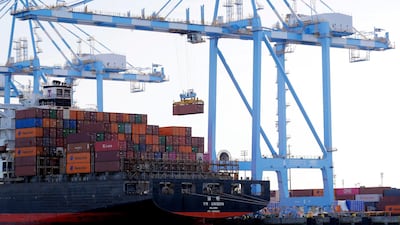Global companies are mapping their supply chains in the wake of the Covid-19 pandemic to gauge their resilience and better prepare for black swan events in the future, according to a World Bank official.
Political and policy concerns are risks for the global supply chain, which “turned out to be somewhat more resilient than people had thought”, Caroline Freund, the World Bank’s director for trade, investment and competitiveness, told the online Global Manufacturing and Industrialisation Summit on Saturday.
She said companies were “thinking of building more redundancy into their supply chains to reduce risk. This is something we will see particularly in critical supply chains [such as] medicines and medical equipment. We have already seen that with food and fuels”.
There were serious questions posed on the strength and viability of the global value chain – the system of mapping people and activities involved in the production of goods and services and its supply and distribution – at the beginning of the pandemic, she said.
However, the initial supply concern was quickly overtaken by the demand shock as borders closed and people were confined to their homes in many parts of the world, leading to a sharp fall in consumption.
“It ended up being a much stronger shock [for businesses] than accessing goods from other countries,” she said. “Demand has become a real concern.”
The pandemic brought the global trade, travel and tourism sectors to a halt in the first half of the year, tipping the world’s economy into a recession that is expected to be the deepest since the Great Depression, according to the International Monetary Fund.
The multilateral lender forecast in June that global gross domestic product would shrink by 4.9 per cent this year.
Global trade is expected to decline by 27 per cent in the second quarter of this year, compared with the previous three months, according to data by the UN Conference on Trade and Development. Global production and manufacturing output are set to decline by 9 per cent, compared with a year ago, UNCTAD said in May.
There are signs of a bounce-back, however, and the recovery is better than what was registered during the global financial crisis, Ms Freund said.
Data from the global shipping industry as of mid-August showed that trade was returning to “normal” but the recovery remained uneven in some regions.
“The biggest rebounds are in East Asia and the Pacific ... similarly South Asia,” Ms Freund said. “North America and Latin America remain weaker than before.”
Despite a recovery in the trade of goods, the services sector took a hit from the slowdown in the travel and tourism sectors, she said.


